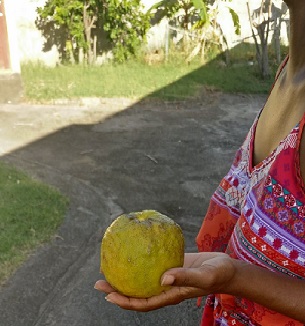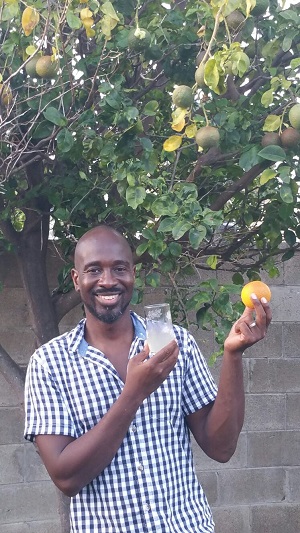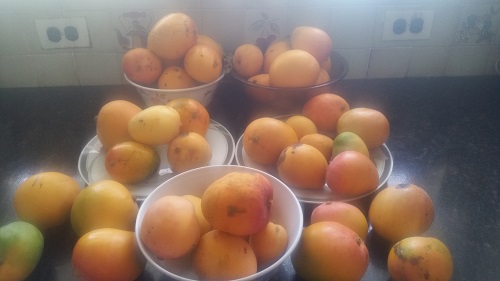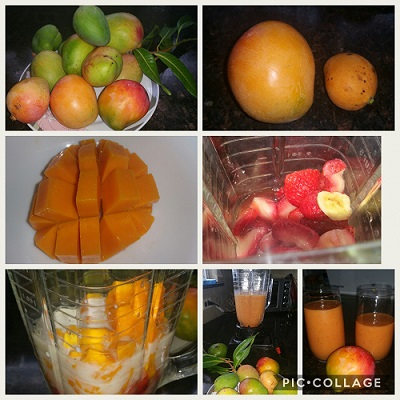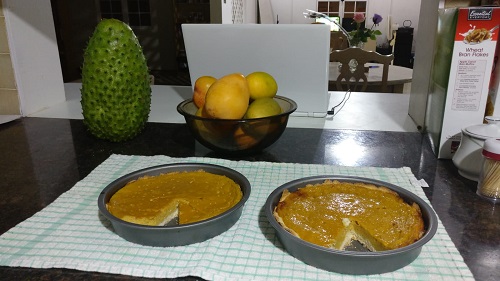Our gardening and health series is back and Abi Begho, in this two-part blog, focuses on fruit trees. In this article she discusses her sour orange and mango trees.
I have really been enjoying my gardening journey, it has been fulfilling and rewarding in so many ways. I’ve grown enough okras and tomatoes to keep us going for months, overcome the challenges of growing peppers and delved into the world of sweet potatoes. This has given me a new-found love of the outdoors and provided an outlet to relieve stress, unwind and relax. I can’t begin to express the significant impact that just five minutes in the garden has on improving my mood and lifting the heaviness of a bad day. It’s been fabulous.
In my previous blogs I have covered vegetables and fruits that I have grown from seeds or cuttings, but in today’s blog I want to focus on the lovely fruit trees that we inherited from the previous owners of our house.
We moved to St Kitts about ten months ago and when we moved into our new house we were just so happy about the fruit trees that came with it, and we have thoroughly enjoyed exploring each one of them, and they are:
- Sour orange
- Mango
- Soursop
- Guava
Today I am going to focus on our sour orange and mango trees.
Sour Orange
You may know sour orange by another name, such as bitter orange, Seville orange, bigarade orange or marmalade orange.
It originated in south-east Asia and was believed to have been taken to Arabia in the 9th century and then made its way to many countries in the years to follow. An interesting fact about its journey around the world is: it was the first orange to arrive in the Americas.
Sour oranges, to me, taste like a cross between an orange and a lime. They are too sour to eat on their own but that hasn’t stopped them from being used in many recipes – its juice and peel are the key ingredients in marmalade, its oil is used as flavouring, its fruit is used in the preparation of liqueur and the dried peel is oftentimes used as a seasoning. And, just about every part of the plant itself (the flower, leaf, fruit, juice and peel) has been used for medicinal purposes but caution is needed as bitter orange supplements have been found to be “possibly unsafe”, especially if taken in combination with caffeine which can lead to high blood pressure, heart attack, fainting etc.
Our Sour Orange Experience
When we arrived, our sour orange tree was laden with fruit and continued to produce fruit for a couple of months and then stopped for several months and now, about 8 months later, copious amounts of fruit are starting to appear again.
For us, we have kept it very simple with our sour oranges and have used them to make a refreshing juice, very similar to lemonade but with more of an orangy-lime flavour (delicious!). The trick to making the juice is getting your proportions of sour orange juice, water and sugar just right. After several tries, I think I mastered it. I found that the juice from two medium sour oranges mixed with 1L of water and sweetened with 1-2 tablespoons of sugar makes the perfect drink, we couldn’t get enough of it and were so sad when we had used up all our fruit. We can’t wait to make some more juice when the current batch of oranges ripen.
Mango
When we first saw the mango tree in our garden it looked like it was on its last legs – the leaves were brown and dropping, in what seemed like large numbers. We kept looking at the tree and thinking: ‘is it going to survive?’, but then a few months later there was a re-birth. We noticed new leaves, and the tree started to look really healthy. Then, in March, we were so excited when we noticed lots of little flowers and it was at that point that we knew we were going to be inundated with mangoes. And, sure enough, a few months later, in May, our tree was absolutely covered with young mangoes (yay!) and in June we had so many mangoes we honestly didn’t know what to do with them. We started giving bags of them away and we’ve also frozen bags, and bags, of mangoes, and still they keep coming, so we’re probably going to run out of space in our freezer soon.
So far, apart from eating the mangoes as is, we’ve made a lot of smoothies. We’ve tried the simple, so almond milk, banana and mango (nice), then moved on to adding pineapple (very nice) and then added some spinach (not as nice). We then tried mango, strawberry, banana and almond milk and that was delicious, the best so far.
I continued experimenting with recipes and made a mango tart/pie (same concept as a French lemon tart, but I used almond milk to make it a bit healthier) and it was absolutely delicious. All I can say is thank God for the internet, I pretty much combined three recipes to get what I had pictured in my mind (I wanted a mango pie with a key-lime pie/lemon tart consistency) and it turned out much better than I expected. I highly recommend it.
Next I would like to make dried mangoes because I have liked buying them in the past as a quick and easy snack. I’m also contemplating making mango ice-cream as I found a very straightforward recipe online. I will let you know how it all goes!
At the moment I have to admit that I am getting a bit tired of mangoes – we have waaay too many and as I type I have about 10 more that dropped overnight that I need to get from the garden. This is truely mango overload!
Mangoes are very well-known so I won’t say much more about them except that I have discovered so many creative, simple recipes that we wouldn’t have come across had we not had an abundance of mangoes to experiment with. So, if you’re looking for something tasty, healthy and tropical then mangoes are a great option as they are very versatile.
Next Time
Our fruit trees have really been a blessing and we’re enjoying experimenting with various recipes. It has been fun. In my next blog I’ll tell you about the final two trees, our soursop and guava trees.
See you next time and happy gardening!
Previous Blogs
If you missed the previous blogs in this series you can read through them here:
- Improving Our Health and Wellbeing Through Gardening: An Introduction
- How I Got Started
- Growing Tomatoes
- Growing Okra
- Growing Peppers
You Can Get In Touch
Are you a gardener? Are you new to gardening or an experienced gardener? We’d love to hear your story and experiences with gardening and how its impacted your health and wellbeing. You can email us at info@lakehealthandwellbeing.com with your experience and we’ll include it in this blog series.







